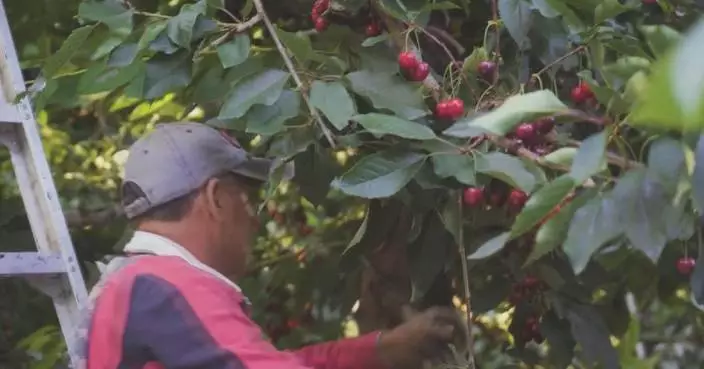U.S. carmaker Tesla broke ground on a mega factory in Shanghai on Thursday to manufacture its energy-storage batteries, Megapacks, a project hailed by the company as a "milestone."
The latest move underscores Tesla's commitment to investing in the world's second-largest economy, defying the rhetoric of "decoupling" and "de-risking" from China ratcheted up by some U.S. politicians.
The new plant spans an area of approximately 200,000 square meters, with a total investment of around 1.45 billion yuan (about 204 million U.S. dollars), according to the administration of Lingang Special Area of China (Shanghai) Pilot Free Trade Zone.
The mega factory is the first of its kind built by Tesla outside the United States and the company's second plant in Shanghai, following the inauguration of its Gigafactory in 2019 which involved an initial investment of over 50 billion yuan.
Each Megapack unit can store over 3.9 megawatt-hours of energy, sufficient to power approximately 3,600 households for one hour.
At Thursday's groundbreaking ceremony in Shanghai, Tesla representatives and local government officials formally launched the construction of the Megapack factory, which is expected to begin mass production in the first quarter of 2025, with an initial capacity of 10,000 Megapack units a year. The units can store nearly 40 gigawatt hours of energy altogether, which is equivalent to the total annual electricity consumption of about 50,000 households in Shanghai.
"Some (of the Megapack units) will supply China's energy storage market, and the others will supply the global energy storage market. We hope to get the factory ready with a very optimized level of capacity utilization as soon as possiblee,” said Tao Lin, the vice president of Tesla.
After the ceremony, Tesla signed a deal with Lingang Group, securing the first batch of orders for its Megapacks in China. The Megapacks would be used for energy storage in a data center in the Lingang Special Area.
"When electricity demand is low and the power grids are under the lowest pressure, we use the megapacks to store the energy. During peak hours when electricity demand is high, the megapack functions as a virtual power plant and can release electricity. This will help increase the stability of power grids in surrounding areas or as a whole," said Deng Haoqiang, the deputy general manager of Lingang Green, the renewable energy branch of Lingang Group.
Tesla once again chosed to build a major plant in Lingang New Area, largely because the region has a sound supply chain and is rich in users. In return, the Megapack factory is set to provide new momentum for the industrial development of Lingang.
"The supply chain and industrial chain of new energy vehicles overlap with the energy storage industry chain in a very high degree. The rapid implementation of the megapack factory needs such a mature system, which is a major advantage of Lingang. Then energy storage can also play a big part in enhancing the industrial chain's resilience and risk resistance,”said Lu Yu, the director of the high-tech division of Lingang New Area management committee.
As the global renewables powerhouse, China is a major market for energy storage. Last year, its installed renewable energy capacity surpassed thermal power for the first time, accounting for approximately 50 percent of the global additions to renewable energy capacity.
Tesla's plan to open a Megapack battery plant in Shanghai was announced in April 2023, cementing another foothold for the company in China. The land acquisition deal for the project was signed in December of the same year, and it received a construction permit earlier this month.
Thursday's groundbreaking ceremony for the Megapack plant comes less than a month after Tesla CEO Elon Musk visited China, during which he said the company is willing to deepen cooperation with China to achieve more win-win results.
In January 2019, Tesla broke ground on its Shanghai Gigafactory, becoming the first company to benefit from a policy allowing foreign carmakers to establish wholly-owned subsidiaries in the world's largest automotive market and one of the fastest-growing EV markets.
The Gigafactory delivered 947,000 vehicles in 2023, an increase of 33 percent from the previous year. It has emerged as Tesla's primary vehicle export hub, with more than half of its global deliveries of over 1.8 million electric vehicles last year originating from there.

Tesla's "milestone" Shanghai battery factory breaks ground









